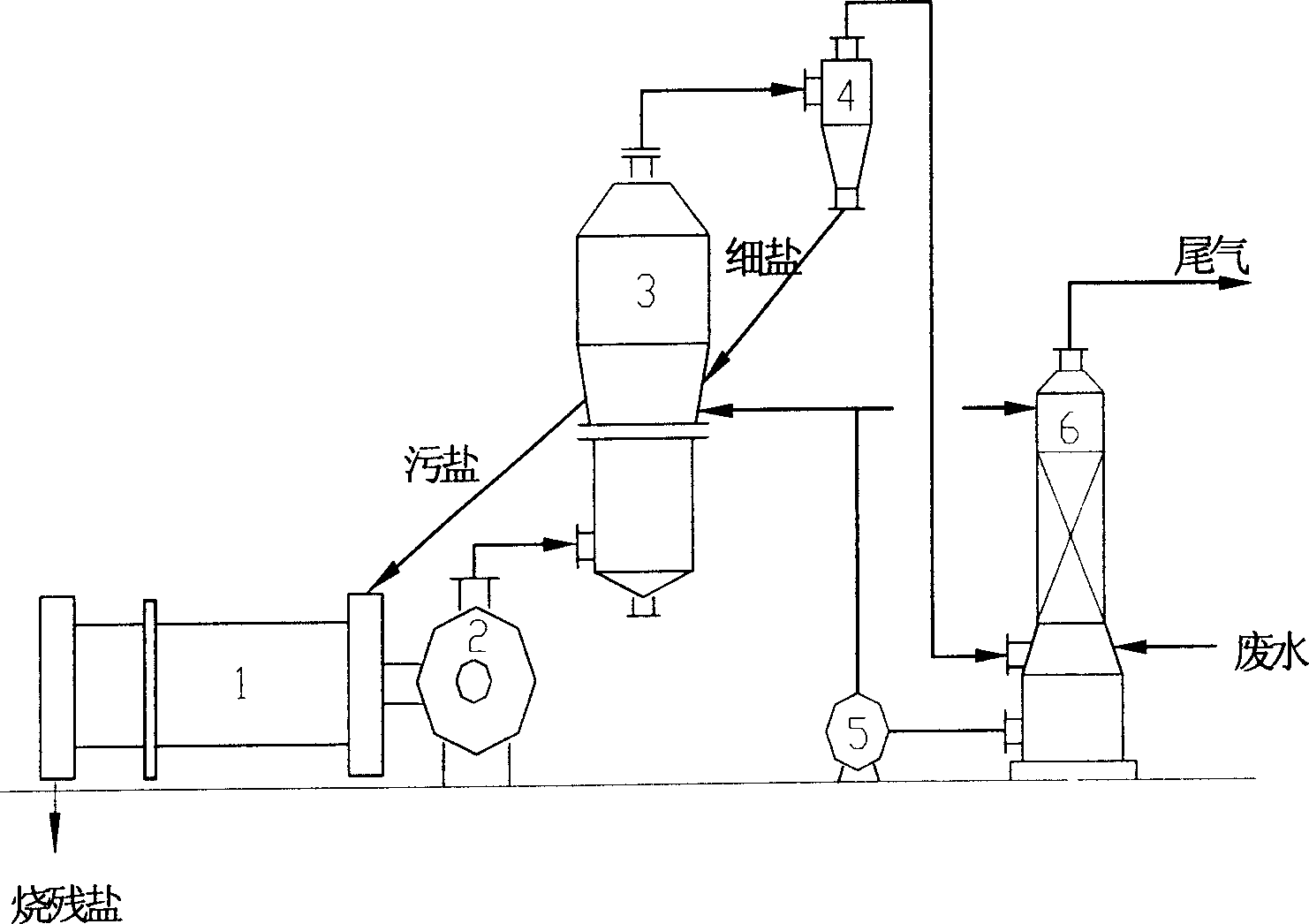Method of treating organic waste water containing salt
A technology of organic wastewater treatment and treatment method, applied in water/sewage treatment, water/sludge/sewage treatment, chemical instruments and methods, etc., can solve the problems of secondary pollution, high treatment cost, complicated operation, etc. The effect of low cost, high heat utilization rate and safe operation
- Summary
- Abstract
- Description
- Claims
- Application Information
AI Technical Summary
Problems solved by technology
Method used
Image
Examples
Embodiment Construction
[0014] Combine figure 1 The following examples are used to further describe the present invention, but the present invention is by no means limited to this.
[0015] Wastewater from the production process of pesticide and insecticide Badan, consisting of 1.5% sodium cyanide, 19% sodium sulfite and sodium chloride, 3.5% organic matter (mainly Badan), PH=8-9, treatment capacity 1.0 ton / hour .
[0016] The process wastewater enters the scrubbing absorption tower 6, and is cyclically washed and absorbed by the circulating pump 5 to absorb the tail gas discharged from the cyclone separator 4, while the wastewater is preheated to about 60°C. The circulating pump 5 atomizes part of the wastewater into the spray fluidized granulation bed 3 with a diameter of 1.2 meters for granulation and drying, and the granulation operation air flow is 3000m 3 / h, the salt layer temperature of the granulation bed is 115℃, and 130-140 kg of polluted salt particles are discharged every half an hour to mai...
PUM
| Property | Measurement | Unit |
|---|---|---|
| diameter | aaaaa | aaaaa |
Abstract
Description
Claims
Application Information
 Login to View More
Login to View More - Generate Ideas
- Intellectual Property
- Life Sciences
- Materials
- Tech Scout
- Unparalleled Data Quality
- Higher Quality Content
- 60% Fewer Hallucinations
Browse by: Latest US Patents, China's latest patents, Technical Efficacy Thesaurus, Application Domain, Technology Topic, Popular Technical Reports.
© 2025 PatSnap. All rights reserved.Legal|Privacy policy|Modern Slavery Act Transparency Statement|Sitemap|About US| Contact US: help@patsnap.com

